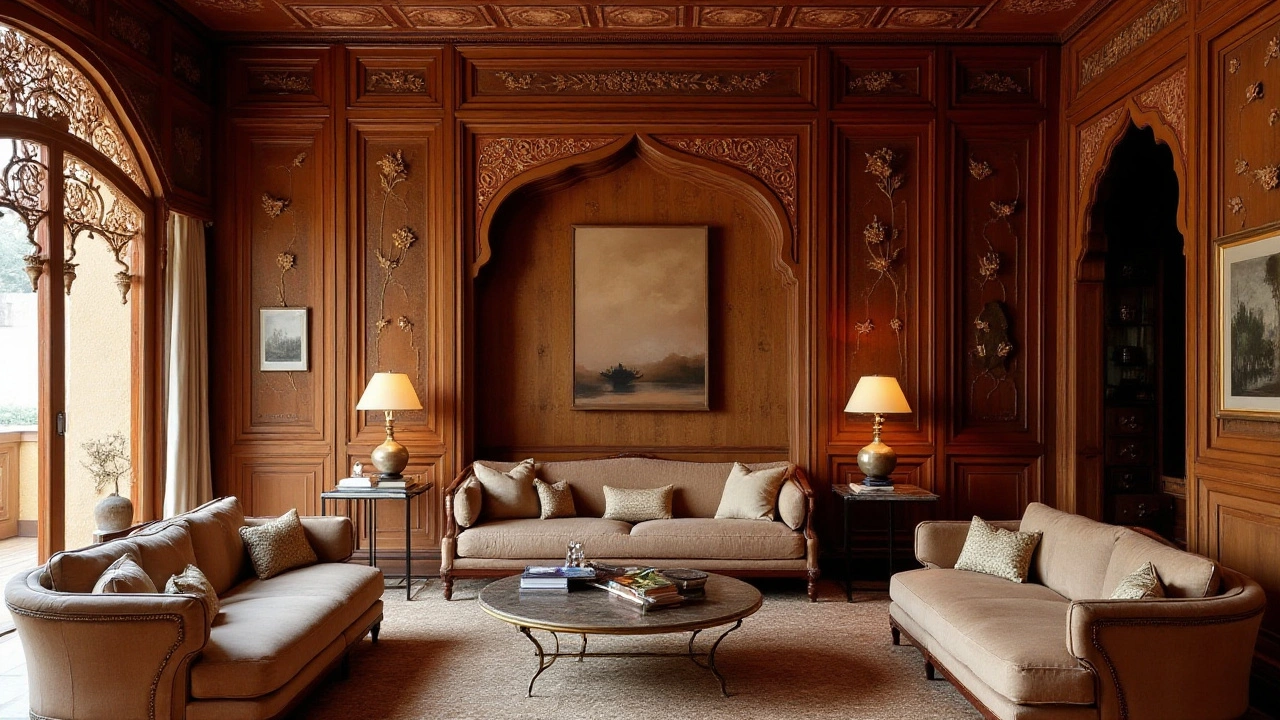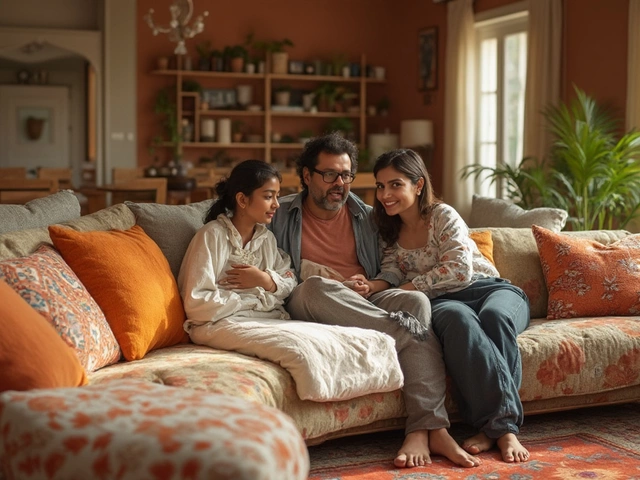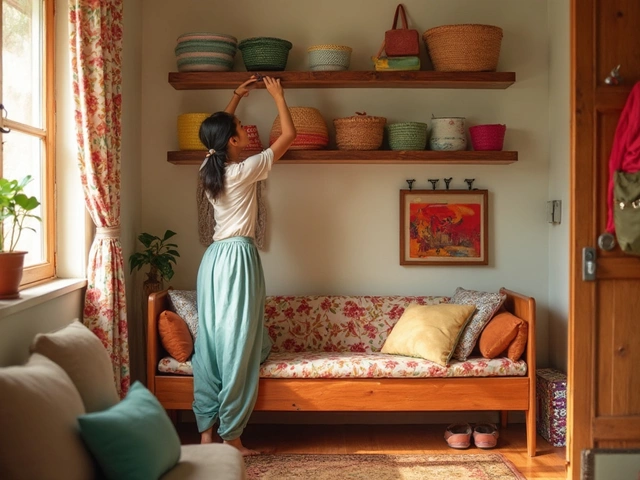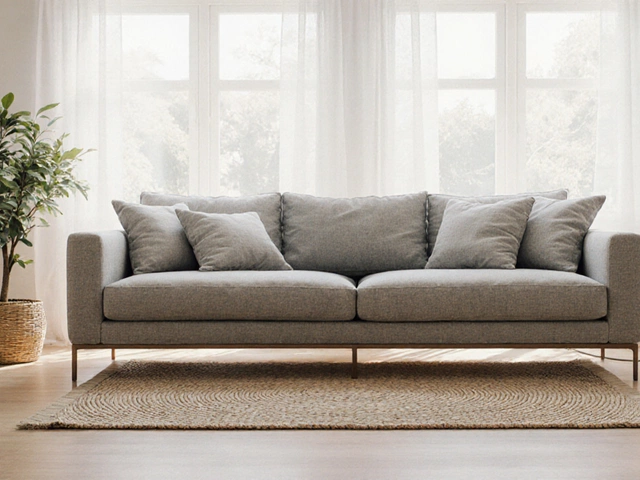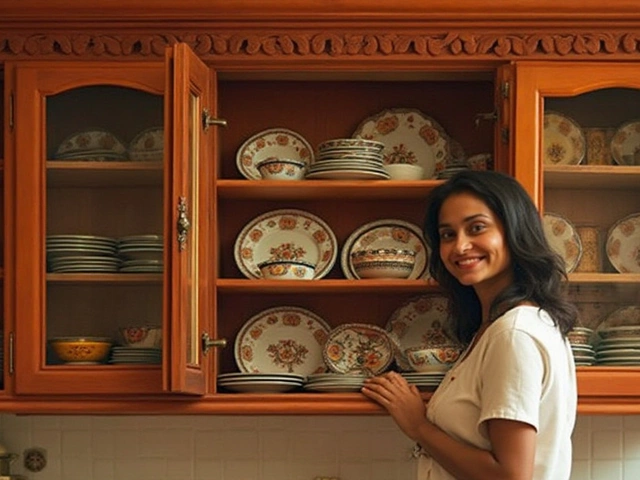In 2024, wall paneling has firmly re-established itself as a fashionable choice in interior design, transforming humble walls into canvases for creativity. This timeless decor element has evolved beyond its traditional roots, offering a wide array of choices that cater to diverse tastes and preferences.
Whether aiming for a sumptuous texture or adding dimension to a plain space, paneling provides a versatile solution that is both functional and stylish. Embracing this trend means opening up possibilities to revitalize your surroundings with minimal effort yet maximum impact. Let’s dive into the resurgence of wall paneling and how it’s being embraced in contemporary homes.
- The Resurgence of Wall Paneling
- Popular Styles and Materials
- Why Homeowners Are Opting for Paneling
- Incorporating Paneling into Modern Decor
- Practical Tips for Homeowners
The Resurgence of Wall Paneling
It's fascinating how trends in interior design often circle back with a fresh twist, and the renaissance of wall paneling is a prime example of this phenomenon. In 2024, many designers and homeowners alike have been charmed by its versatility and capacity to transform spaces. Once considered a relic of the mid-century, wall paneling has found its way back as a bold and modern choice for both homes and commercial spaces. What makes it intriguing is its ability to blend historical charm with contemporary aesthetics. This marriage of eras provides a unique canvas that appeals to a variety of stylistic preferences.
Modern wall paneling doesn’t just stay in the realm of traditional wood setups seen in stately homes of the past. Nowadays, with advanced materials and innovative designs, paneling has expanded into concrete, metal, and even fabric options. This particular element of interior design is gaining contractual interest thanks to advancements in sustainable materials that make paneling not just flexible in design but eco-friendly too. An exciting development is the rise of reclaimed wood paneling, where old materials are given a new lease on life, artfully contributing to one's environmental consciousness. It's no wonder this design choice has seen such a comeback; it's functional, earth-friendly, and visually striking.
Many influential voices from the design world have sung praises of this versatile decor element. As stated by renowned interior designer Jane Michaels,
"Wall paneling is like the little black dress of interior design—it never goes out of style and can be dressed up or down to fit any occasion."It’s not just about the aesthetics, which are undeniably luxurious; it’s also about the functional benefits such as insulation and soundproofing, particularly appealing in open-plan homes or office settings. This combination of beauty and practicality makes wall paneling a staple in modern renovation projects.
One key factor behind this revival is the growing longing for tactile design elements in a world saturated with digital experiences. Homeowners are increasingly seeking textures in their living spaces that invite touch and interaction. This human-centric approach to home decor creates a more welcoming and engaging environment, proving that physical surroundings significantly impact our everyday experiences. As people spend more time at home, they desire spaces that feel both comfortable and dynamic, and home decor choices like paneling fulfill these needs beautifully.
The logistics of installing paneling have also become much more accessible, broadening its appeal. Manufacturers now offer easy-install systems that cater to do-it-yourself enthusiasts, significantly reducing the barrier to entry. With a growing number of tutorials and resources available online, DIY paneling projects are empowering individuals to take control of their home transformations. This has catalyzed a surge in personalized designs, as people adapt paneling techniques to reflect their own tastes and lifestyles.
Popular Styles and Materials
The realm of wall paneling in 2024 is richer and more diverse than ever before. Historically seen in stately homes and old-world buildings, paneling has gracefully transitioned into modern spaces, presenting a harmony between classic and contemporary styles. One of the most popular styles making its mark this year is the shiplap paneling. Originally used in barns and outbuildings for its rustic charm, shiplap has found a new home in urban apartments and suburban houses alike. Its clean lines and subtle texture offer a minimalist look that pairs perfectly with the serene aesthetics today's homeowners crave.
Wainscoting, another classic, continues to reign supreme in the world of paneling. Often associated with traditional decor, wainscoting now often surprises with painted finishes in bold, unexpected colors, giving it a fresh and modern twist. It not only adds elegance but also serves a functional purpose by protecting walls from scuffs and dents. Similarly, board and batten, typically used outdoors, has transitioned indoors, creating visually interesting patterns that bring depth and character to living spaces. In fact, according to a recent survey by Home Decor Magazine, 45% of interior designers reported an increase in requests for board and batten interiors during the past year.
Beyond styles, the materials used in wall paneling have also seen an evolution. Traditional wood remains popular, but innovative materials such as MDF (Medium Density Fiberboard) and reclaimed wood offer sustainable and budget-friendly alternatives. MDF, for example, is favored for its smooth surface that is perfect for painting and crafting intricate designs. Reclaimed wood, on the other hand, is a go-to for eco-conscious consumers who appreciate its unique imperfections and rich history.
Interior design experts suggest that embracing textures in wall paneling can have a profound impact on the atmosphere of a room. Textured panels like 3D geometric designs or leather-covered panels are being used to add a touch of luxury and intrigue. As noted by renowned interior designer, John Richards, "There’s a tactile element to textures that speaks to the senses, transforming flat walls into dimensional masterpieces." Such panels can be strategically placed to serve as focal points, whether behind a bed in a master suite or as an accent wall in a living room.
To aid in your decision-making, here’s a simple table outlining some popular paneling materials and their typical use:
| Material | Use |
|---|---|
| Wood | Traditional, Classic Look |
| MDF | Budget-Friendly, Paintable Surface |
| Reclaimed Wood | Eco-Friendly, Rustic Appeal |
| 3D Panels | Modern, Textured Designs |
When considering wall paneling, it’s crucial to think about how these elements will blend with your existing decor. Combining panel styles can yield a seamless look while integrating different materials can inject variety and depth. From 2024 trends in wall paneling styles to the innovative materials available, the possibilities are nearly endless, giving every homeowner the ability to confidently create a space that truly reflects their personal taste.
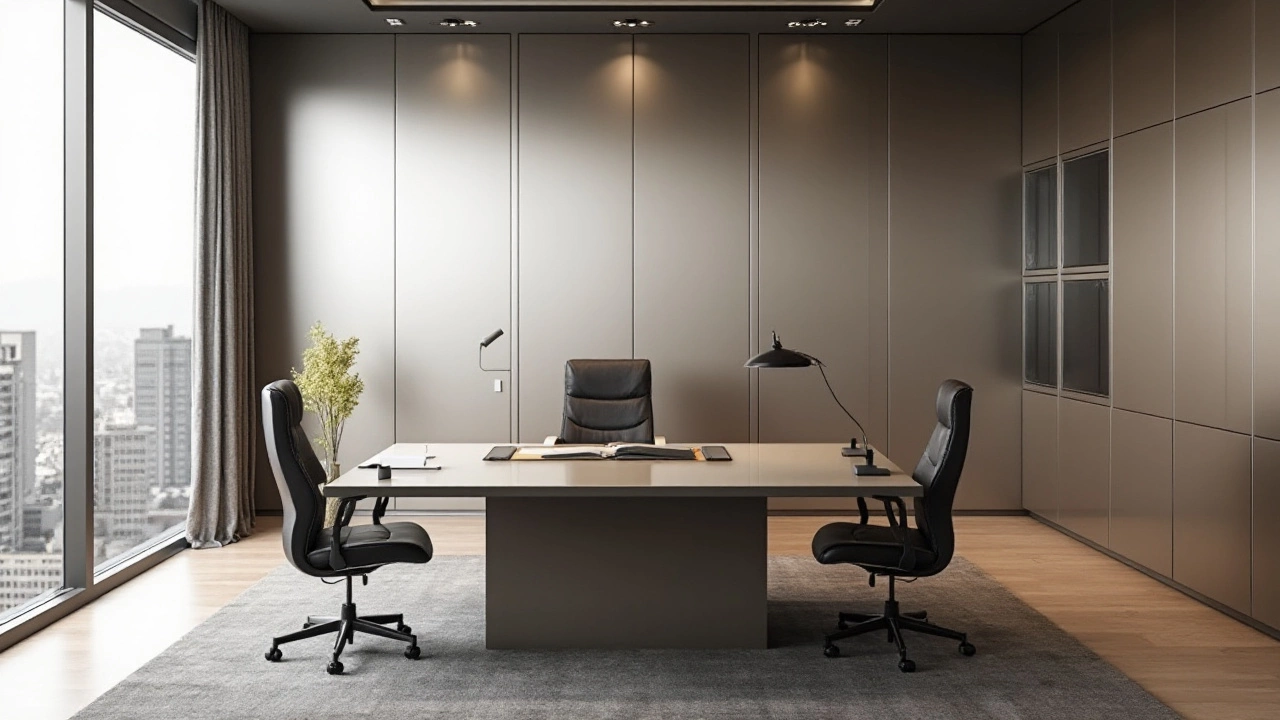
Why Homeowners Are Opting for Paneling
The allure of wall paneling in 2024 isn't just about aesthetics—it's about creating spaces that resonate with personality and warmth. Homeowners are rediscovering the charm and utility of paneling for various reasons, making it a go-to choice for those looking to add texture and character. Unlike simple paint or wallpaper, paneling offers a depth that can transform the mood and functionality of a room. Its ability to disguise wall imperfections also provides a practical solution for older homes or spaces that need a facelift.
One major reason for its popularity is the versatility in design that wall paneling offers. From classic wainscoting and shiplap to contemporary geometric patterns, the array of styles available allows tailor-made solutions for every home. This customization appeals to homeowners who want to reflect their personal style through their interior design choices. Paneling also serves as an excellent backdrop for both modern and vintage decor, making it a harmonious fit for various design aesthetics.
Moreover, interior design trends are steering towards more eco-friendly options, and many paneling materials now allow for sustainable choices. Reclaimed wood, MDF, and bamboo panels are gaining traction, as they're not only environmentally conscious but also bring a unique texture and narrative to the living spaces. This shift towards sustainability is encouraging homeowners to reconsider their material choices in the pursuit of both beauty and responsibility. According to a study by the Home Decor Magazine, 60% of homeowners preferred recycled materials for their interior renovations, which includes paneling.
Interestingly, paneling is also considered a relatively easy DIY project for those who enjoy a hands-on approach. This empowers homeowners to engage directly with their living spaces, giving them creative control while potentially saving on installation costs. The availability of online tutorials and resources has demystified the process, making it more accessible to the average person. This communal knowledge-sharing has sparked a DIY revolution, with panels often seen as the canvas for creative expression in homes.
"Paneling can transform a space instantly, giving it texture, dimension, and a different feel altogether," says interior designer Jane Holland, known for her commitment to sustainable design practices.From a practical standpoint, paneling is exceptionally durable and can stand the test of time, making it an attractive long-term investment. It adds an insulating layer which can contribute to energy efficiency, a benefit that can't be understated in regions where temperature extremes are common. Such energy savings offer both environmental and economic advantages, reducing costs over the life of the installation.
The range of choices, ease of customization, sustainability benefits, and potential energy savings are key factors driving homeowners to embrace wall paneling as a feature of their homes. Whether revitalizing a single room or planning a complete overhaul, paneling provides an exciting avenue to explore, bringing both beauty and functionality to the forefront of modern interiors.
Incorporating Paneling into Modern Decor
Transforming a home with wall paneling may feel like a leap into the past, but in the hands of modern design, it’s nothing short of revolutionary. New materials and innovative designs have shattered the old stereotypes, fitting seamlessly with contemporary aesthetics. For those skirting monotony in their spaces, paneling brings texture and layers to interior surfaces that often go overlooked. The key lies in selecting styles that harmonize with existing decor elements like furniture, artwork, and lighting, achieving a cohesive and sophisticated look. Metropolitan homes have embraced sleek, minimalistic panels that echo urbanity's streamlined style, while suburban homes have started to integrate rustic, reclaimed wood panels adding warmth and earthiness. This can result in a highly personalized space that resonates with individual tastes and stories. Each choice tells a unique narrative while drawing on the timeless appeal of paneling.
Incorporating paneling requires understanding the relationship between function and form. Decorative potential aside, paneling can significantly impact the acoustics and insulation of a room. By softening sound and maintaining room temperature, it strikes a perfect balance between beauty and practicality. Strategically placed, paneling can create focal points that draw the eye and invite conversation. Designers often play with color and texture, mixing materials like leather, acrylic, or even eco-friendly bamboo, to add a modern twist. For those daring enough to experiment, metallic or reflective panels can add drama and dimension to lofts and modern offices. As renowned interior designer Sarah Beeny once remarked,
“In the realm of surfaces, it's not just what you add, but how it dances with light and the stories it whispers through texture.”This highlights the importance of seeing paneling as a dynamic art form rather than a static element.
Customizing wall panels to align with home's built-in features makes installation even more impactful but challenging. Paneling should frame rather than overwhelm architectural details like fireplaces or windows, acting as a stage rather than a set piece. Designers recommend integrating built-in sconces or shelving units within the panels to enhance the room's functionality without sacrificing elegance. The versatility extends to mix-and-match designs. By blending different types of panels or finishes within one room, a playful rhythm emerges that can intrigue and engage guests for a long. This style is especially popular in multifunctional spaces, where zoning using diverse materials can subtly demarcate areas without using barriers.
A key factor in incorporating paneling into modern decor is aligning with current trends while ensuring longevity in style. Sustainable materials are gaining momentum; their appeal lies not just in environmental consciousness but also in their subtlety and raw appeal. Reclaimed wood, for instance, provides a rustic charm with a history that new wood simply cannot mimic. Metals like copper and brass are gaining traction in the realm of panels, adding an industrial touch that pairs beautifully with minimalist interiors. These choices are not only about aesthetics but also speak to a homeowner’s values reflecting sustainable living. By structuring the design around these materials, one achieves a space that is both contemporary in appearance and ethical in substance.
In terms of technical aspects, paneling demands careful planning and execution. It's crucial to accurately measure walls and understand the underlying structures before installation. Many DIY enthusiasts share tips about using laser levels for precision and consulting with professionals when tackling complex layouts or historical homes. Pre-finishing panels before installation can save on labor costs while ensuring a perfect blend of colors and finishes upon placement. Paneling isn’t merely a surface treatment; it’s a commitment to a design ethos requiring patience and foresight. Done right, it becomes a lasting expression of elegance, elevating every corner it graces.
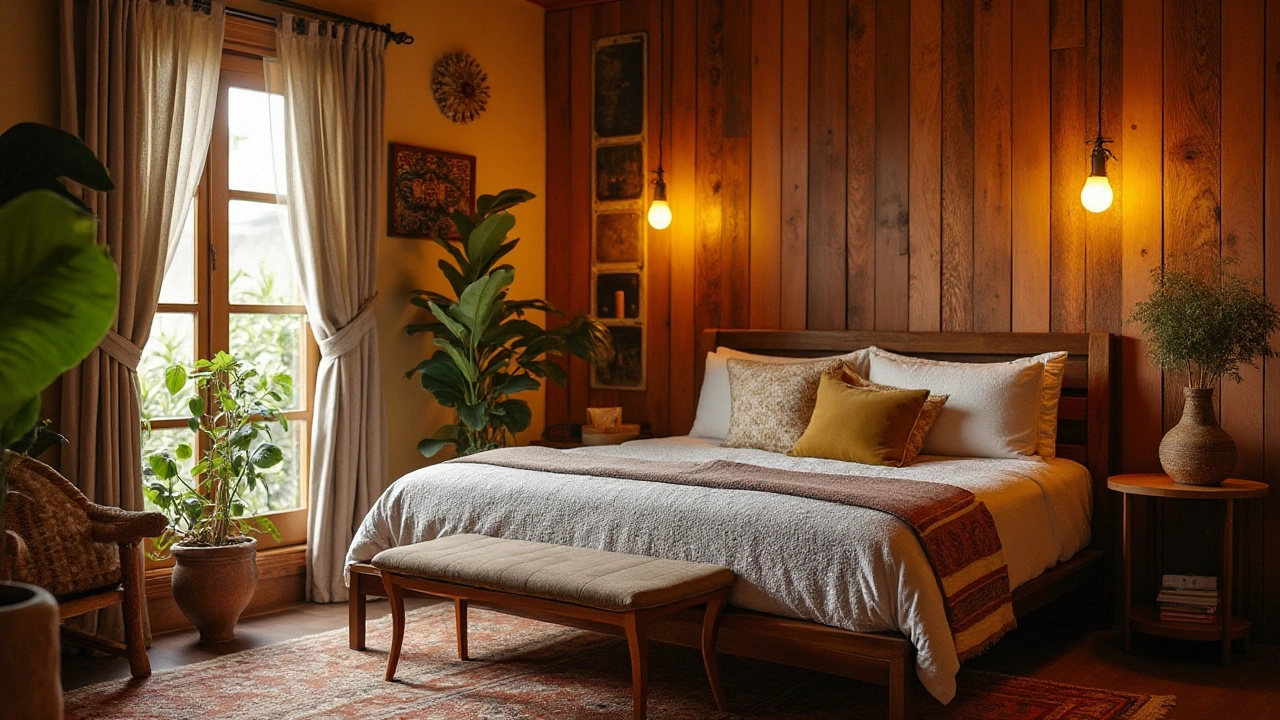
Practical Tips for Homeowners
Embarking on the journey of integrating wall paneling into your home can be both exciting and daunting. Knowing where to begin is half the battle won. This transformative trend in home decor offers numerous possibilities to enhance any space. First and foremost, consider your home's existing architecture and style. Determine how paneling can complement what you already have—be it a rustic cottage or a sleek urban apartment.
Start with understanding the different types of materials available. From traditional wood panels that exude warmth and richness, to contemporary PVC or MDF options providing a modern edge, the choices are extensive. Each material brings its own set of characteristics, benefits, and maintenance requirements, making it necessary for homeowners to weigh their options carefully. Wood, while classic, needs regular upkeep to maintain its lustre, whereas PVC offers a maintenance-free alternative.
When planning your interior design approach, color plays a pivotal role. Light-toned panels create an illusion of spaciousness, making small rooms appear larger. Conversely, darker shades can add depth and a touch of intimacy to expansive areas. It's also worth considering textured panels that can infuse a room with complexity and interest.
"Paneling can redefine a room's ambiance," says interior design expert Nathan Clarke, "adding layers and stories to flat, uninspired walls."
Installation is another crucial aspect. While DIY installation is feasible for the handy homeowner, professional help might be preferable for intricate designs or high-quality finishes. To streamline the process, ensure walls are primed and void of any imperfections that might impede adherence. It’s also wise to invest in quality adhesive or fasteners suited to the panel type. For those keen on sustainability, choose eco-friendly options with recycled content or low-emission finishes.
Engage with the community of design aficionados online for inspiration and advice. Websites and forums are filled with real-life transformations showcasing different wall paneling styles. Connecting with others can be invigorating, offering fresh perspectives and insights you might not have considered. Armed with the knowledge and enthusiasm, homeowners can confidently embrace the wall paneling trend, understanding they’re not just upgrading a wall, but their living experience.
